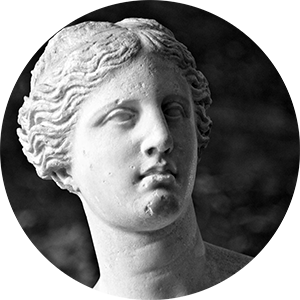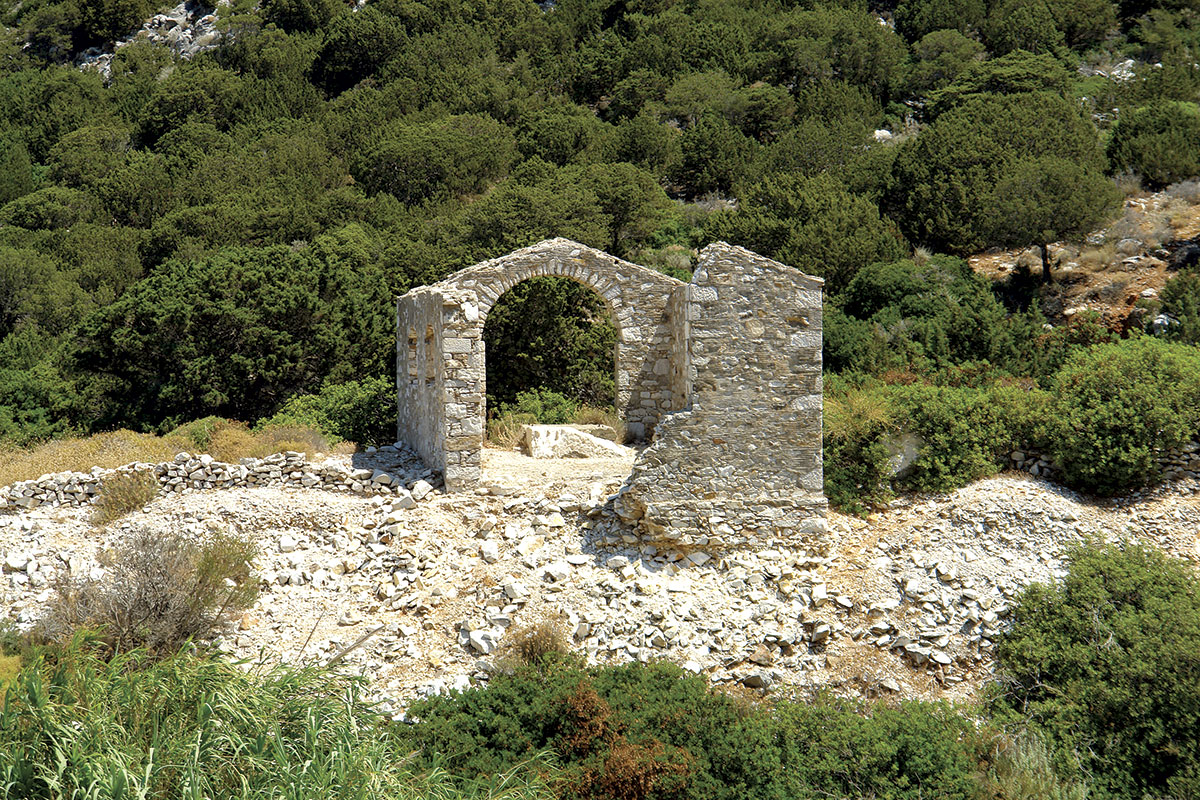The palimpsest of the Nymph’ quarry at Marathi, Paros
Text: Nikos Belavilas, Professor at National Technical University of Athens
Photos: Dimitris Vranas (A.I.F.)
First published in PAROLA magazine
In the years preceding the outbreak of the Greek Revolution, travellers, philhellenes and archaeologists travelling to Paros were aware of the adits at Marathi. The artificial labyrinthine cave system, created in the antiquity, fascinated foreign travellers as they immersed themselves in the marble riverbed that had once given life to statues of gods and humans. Related romantic depictions appeared on engravings that were already circulating in European libraries, palaces and salons.
The time had come for the new state to be established. The Cyclades were unified with it and the new government took office in Athens, aspiring to revive classical antiquity in the very place where it was born.
The deposits of lichnites, the Parian marble, were a challenge, as this was the very material that, along with the Pentelic marbles, had given shape to ancient sculpture and architecture – the marbles of Penteli, Paros, Naxos and Tinos constituted the most outstanding construction material in both the Acropolis restoration and the building of neoclassical mansions during the neoclassical era. Yet, it was not only Athens, but also Piraeus, Hermoupolis, Patras, with town halls, theaters, museums, churches, academic institutions and libraries being massively built throughout the first century of the newborn state’s independence and reconstruction of its cities. Thousands of tons of white, grey, and green blocks were coming out of the islands’ quarries heading for construction sites aboard fishing boats and, later, steamboats.
Imagine the following scene: it’s 1835, and archaeologist Ludwig Ross, along with architects Stamatis Cleanthes and Edward Schaubert, disembark at Marathi, Paros. The latter have just completed the urban planning of Athens and Piraeus. All three of them have been assigned important roles in the restoration of the Acropolis monuments. There they are, in the Nymphs’ cave, seeking marbles suitable for restoration purposes, especially that of the temple of Athena Nike. Cleanthes would return to the Cyclades time and time again, searching for, extracting and trading marble – Parian lichnites and green Tinian marble. As fate had it, he met his accidental death in one of his quarries, most probably in Paros, years later, which marked the end of a brilliant career.
Alongside Cleanthes, the “French Marble Society,” one among a number of European agencies exploiting the Aegean’s mineral wealth, was operating on the same site. The construction works the company carried out inside and outside the ancient quarry dramatically altered the landscape. A new tunnel, an engine room, a railway and stone-built structures made up an industrial complex, a small colony, perched on the island’s hills. Back then, in mid-19th century, antique technical works were not yet recognized by the academic community or the archeological authorities as monuments worthy of preservation, such as were temples, palaces, theatres or works of art. It was a time when city walls, aqueducts, harbours, entire districts of residences dating back to classical and medieval antiquity were crushed right down to their foundations or buried under new city sprawls. There was no concept of industrial archeology as yet, either in Greece or internationally. Later on, in the late 19th century, the father of Greek mining, Andreas Kordellas, and leading neoclassical architect Ernest Ziller gave us the first written testimonies, their schematics of these hitherto negligible structures – mines in Lavrion and aqueducts in Athens. In this way, the value of ancient technical works came forth.
Over a century went by when contemporary Parthenon restoration expert, Professor of Architecture Manolis Korres, following in the same footsteps in his effort to trace the course of the ancient marbles, initially visited the Penteli quarries, capturing the matrices that generated the columns and other architectural features of the Athenian temples. He then stopped off at the Nymph’s Quarry, where, as legend has it, Aphrodite of Milos (Venus de Milo) itself was quarried. He is the first to have recorded, in an astonishingly accurate design, the two eras of the cave – the ancient quarry, along with the later interior underground additions built by the French Society. A decade later, in the early 2000s, we, as a team of architects, mineralogists and historians, met him in the context of a major research project into the mines on the Aegean islands carried out by the National Technical University of Athens. It was then that the overground section of the 19th-century facilities was measure drawn and documented. Thus, the image of this monumental palimpsest was completed: it is the Nymphs’ quarry at Marathi, born in the classical antiquity and reborn in the era of the expansion of the industrial revolution across the islands.
Today, Piraeus-born photographer Dimitris Vranas comes to the quarry. With the lens and craft of an architectural expert, he preserves the ruin-laden landscape dating back to the French Society against a backdrop of Parian hills, heaps of marble chips– the quarrying residues, entrances and shafts: heavy, no-frills, stone-built industrial buildings, stripped of their wooden frames and sloping roofs; masonry jointed with pressed Cycladic plaster and the “sardine” technique, trowel-carved horizontal ribs, to enhance cracking resistance; mortar coat and stonework that withstand time; arched openings in the interiors and lowered arches in the lintels built without wood, with the use of wedge stones; the oval skylight above the doorways letting light into and steam-engine fumes out of the workshops; the engine stands and the structures supporting the winches, the rails, the entire bygone mechanism, the one that transferred the cut marble blocks out of the depths of the earth and into the cutting unit, the warehouses and, finally, the outside world.
Through his magnificent photos, Dimitris Vranas gives his testimony under the blazing Aegean sunlight. He preserves an industrial activity that has come, shone and gone. We can witness its traces thanks to these photos, with the tools soundless and the people voiceless, in the absence of machines and workers, without the marble. We now look at it as a memory, living through its ruins, embedded in the silence of the island’s relief, presently unscathed by quarrying and fumes. It is almost a piece of nature and, by all means, a part of history, not only of Paros, but of the 19th-century Greek industrial life.
This monumental landscape complex is one of the highlights of ancient and later Aegean quarrying history. Dimitris Vranas’s photographing makes the most of it in a unique way. At the same time, he calls attention to the need to rescue and protect it.



